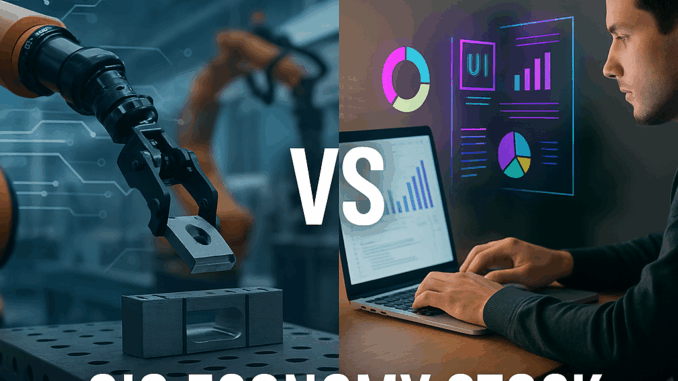
As the gig economy continues to expand beyond ride-sharing and food delivery, two unique players have carved out niches in vastly different corners of this decentralized work movement: Xometry (XMTR) and Fiverr (FVRR). While both operate as online marketplaces connecting buyers and sellers of services, the types of services—and investment prospects—couldn’t be more different. In this post, we’ll break down both companies’ business models, financials, and stock performance to determine which one may be the smarter gig economy stock to own in 2025.
Business Models: Digital Freelancing vs. Manufacturing-as-a-Service
Fiverr operates a globally recognized platform that connects freelancers with clients in need of digital services like graphic design, writing, programming, and marketing. Its model is transaction-based: Fiverr takes a percentage of each completed job, earning recurring revenue as the gig economy grows in size and credibility. Its user-friendly interface and scalable tech stack have helped it gain traction among remote workers and SMBs alike.
Xometry, on the other hand, connects engineers and procurement teams with vetted manufacturers for custom parts. Think of it as an industrial version of Fiverr—but for CNC machining, injection molding, and 3D printing. Xometry’s edge lies in its AI-driven quoting engine, which offers instant pricing and lead times for complex manufacturing jobs. The company is betting big on the digital transformation of supply chains and U.S. manufacturing reshoring.
Financial Health and Key Metrics
Fiverr, founded in 2010, is the more mature of the two and has shown steadier revenue growth. As of its latest earnings, Fiverr reported $92.4 million in quarterly revenue, with a gross margin of over 80%—a testament to its asset-light model. However, it has struggled with profitability amid rising competition and marketing expenses.
Xometry, while younger (IPO’d in 2021), is in hyper-growth mode. It recently posted $134 million in quarterly revenue, reflecting double-digit YoY growth. However, its gross margins hover around 30-35%, much lower than Fiverr’s. The reason? Xometry carries more cost-intensive operations like logistics and fulfillment. The company is still unprofitable but narrowing its EBITDA losses as it scales.
Market Position and Competitive Landscape
Fiverr’s biggest competition comes from other digital freelancing platforms like Upwork, Freelancer.com, and niche platforms like Toptal. Its early mover advantage and strong brand recognition give it a competitive moat, but price sensitivity and platform fatigue among freelancers are emerging risks.
Xometry, meanwhile, competes with legacy directories like ThomasNet, smaller job shops, and even Amazon’s industrial marketplace. But its proprietary tech platform and ability to rapidly quote and source custom parts give it a technological edge. It’s also expanding internationally and through acquisitions like Thomas in 2021.
Stock Performance and Valuation
Fiverr’s stock soared during the 2020 remote work boom but has since cooled off, trading well below its all-time highs. It currently trades at a P/S ratio of around 2.5x, reflecting tempered growth expectations and profitability concerns. Still, for a digital marketplace, this valuation is not unreasonable.
Xometry, by contrast, is still considered a high-growth stock and trades at a higher P/S multiple—around 3.5x. Its stock has been volatile due to macroeconomic pressure on manufacturing and high short interest, but analysts remain optimistic about its long-term potential in reshaping industrial procurement.
Risks and Growth Opportunities
Fiverr’s main risk is saturation. With many freelancers now working across multiple platforms and larger companies building internal gig platforms, Fiverr must continue innovating to retain its user base. That said, it could benefit from generative AI tools that improve freelancer productivity and expand service categories.
Xometry faces more tangible risks: economic slowdowns, supply chain shocks, and execution risk as it tries to scale a complex marketplace. However, reshoring trends, increased demand for rapid prototyping, and digital transformation in manufacturing present enormous upside potential.
Verdict: Which Stock Is the Better Buy in 2025?
If you’re looking for a steady, digital-native platform with high margins and strong brand equity, Fiverr might be your better bet—especially if it continues to cut costs and grow enterprise offerings. On the other hand, if you’re a growth-oriented investor who can stomach volatility and is bullish on the digitization of manufacturing, Xometry offers a compelling long-term thesis.
Ultimately, both represent unique slices of the gig economy. Fiverr owns the digital freelance world, while Xometry is trying to digitize an industrial one. The best pick depends on whether you believe the next big wave of gig growth will come from laptops—or laser cutters.



Be the first to comment